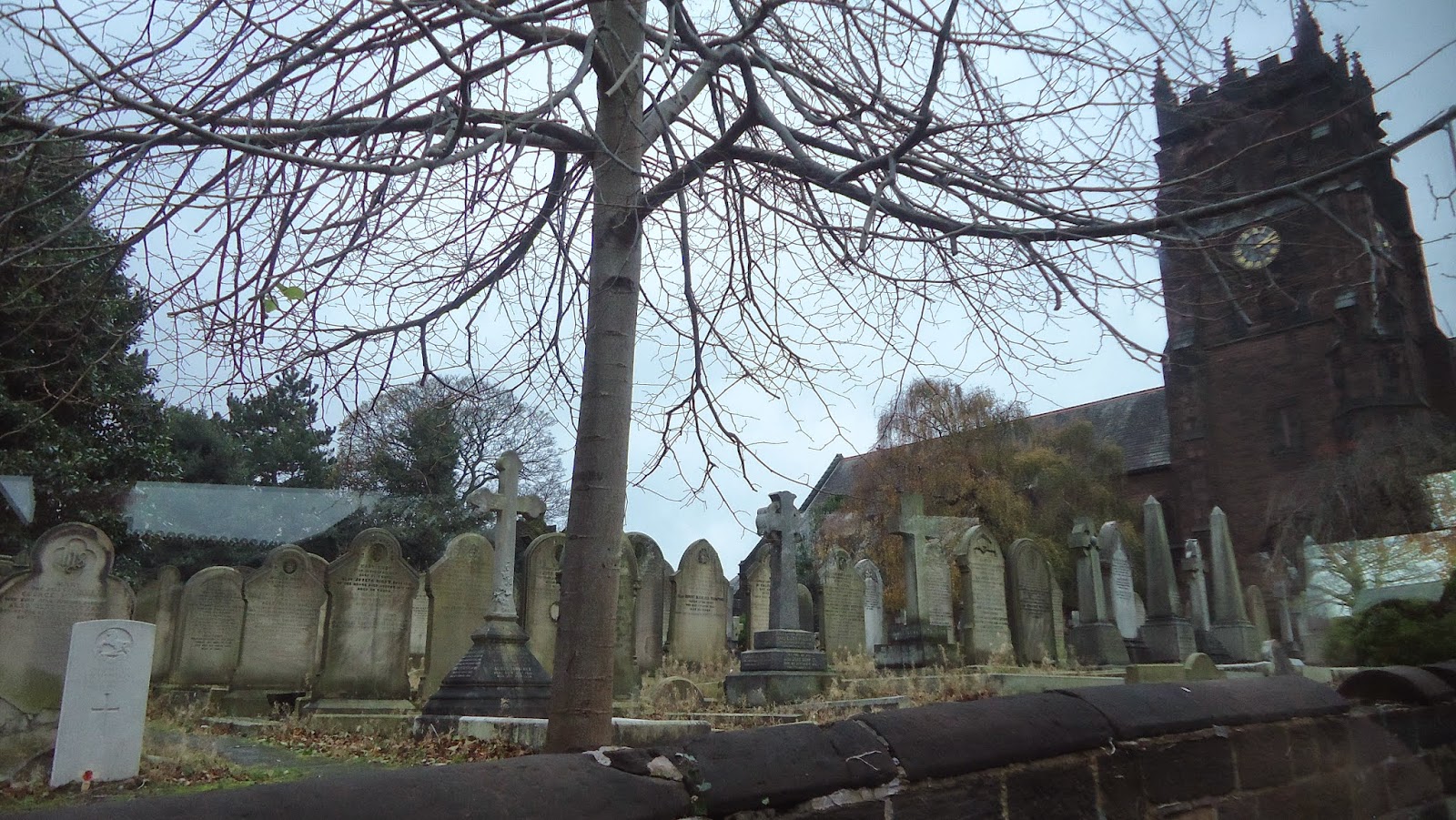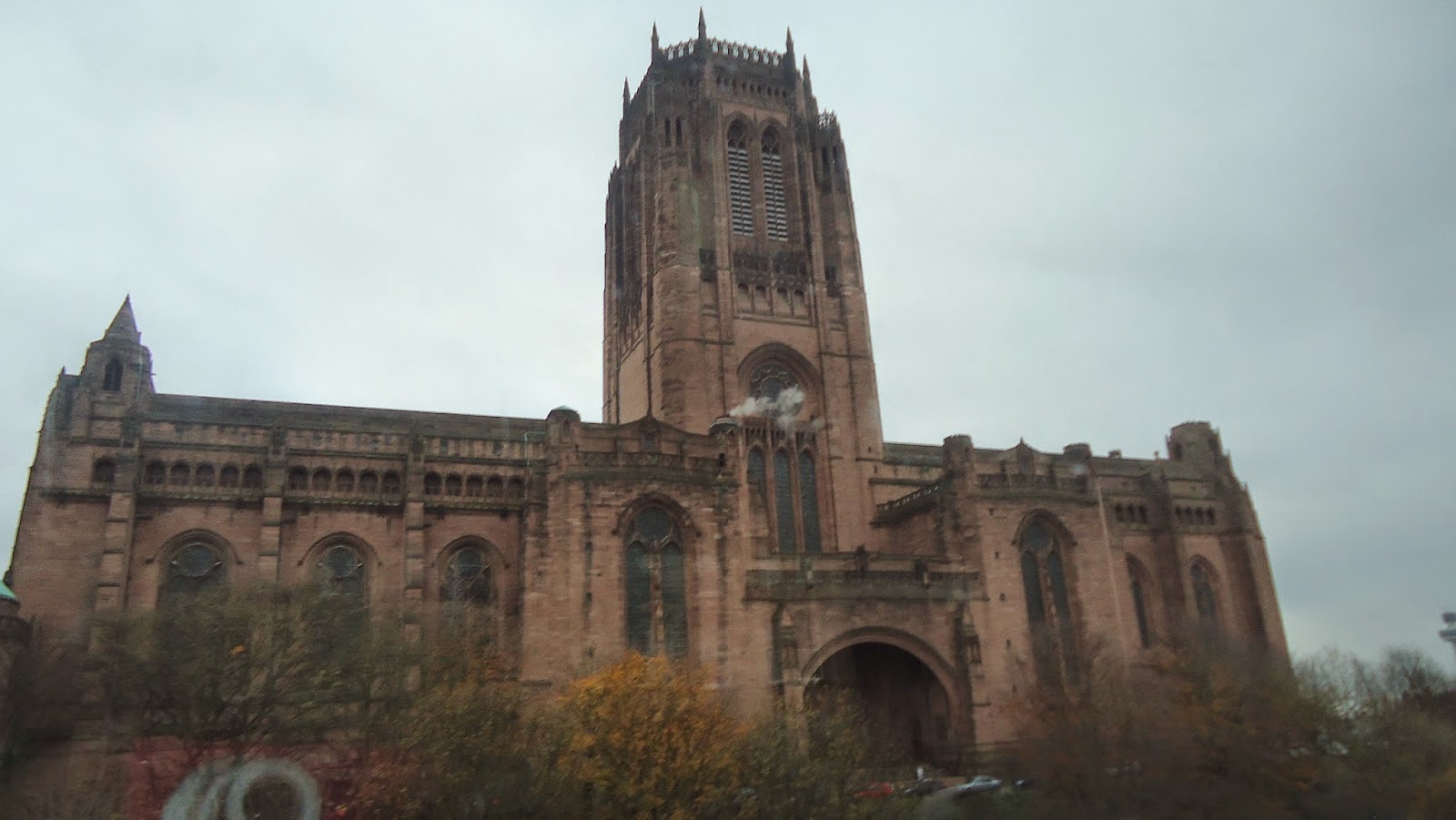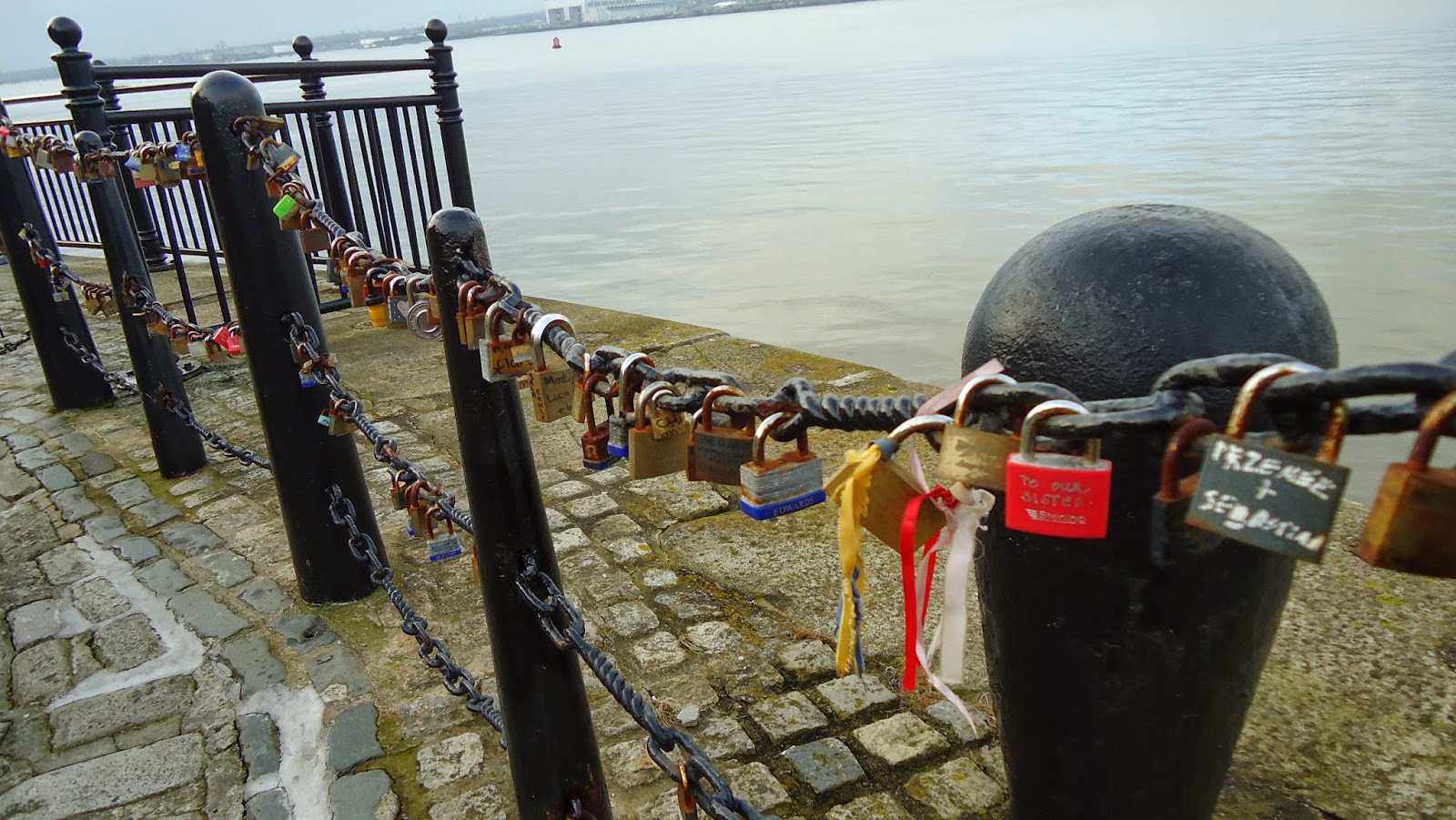Ladies and gentlemen, The Beatles!
 |
| George, Paul, Ringo and John |
I grew up in the sixties and can’t apologize for loving The Beatles. I sang into that hairbrush just like the rest of you. With Dippity-do setting my side curls, I spent hours writing out their lyrics longhand. And years later, when I still could, I jogged hundreds of miles with Beatles songs setting my pace (thank you, Maxwell's Silver Hammer). So when we moved to England, a trip to Liverpool was a must.
.JPG) |
| Ringo's childhood home halfway down on the left |
 |
| St. Peter's Parish where Eleanor Rigby is buried, along with her name. |
The tour ended at the world-famous Cavern Club where John, Paul, George and Ringo played more than 290 times. It was heady and loud and hot and just as I imagined. We tipped a pint in honor of those lovely lads who are solely responsible for me knowing all the words to No Reply forty years later -- though I can't remember if I left the iron on.
The city is a mecca for most of our
generation. For many visitors like us, Liverpool is synonymous with The Beatles so
it's no surprise their presence is everywhere. In candy stores:
 |
| The Beatles in Jelly Beans |
 |
| Store Window Display at HMV |
Liverpool’s music scene still thrives because of The Beatles, but I was happy to discover more to the city than just the lads.
Liverpool, The City Itself
This hilly coastal city was
chartered in the 1200s by King John because he wanted to invade Ireland and
needed a place to launch his attack. Centuries later the city grew rich spinning
American cotton into thread. When the 19th century potato famine hit, over 9 million English
and Irish immigrated to Ellis Island through Liverpool’s port. Today,
Liverpool's main income is
tourism and for good reason.
 |
| The early 20th Century buildings known as the Three Graces |
You can see one of the two cormorants perched on top of the Royal Liver Building (far left). It's looking out to the sea to protect all the seafarers.
These four friendly guys are down at the Albert Dock in front of the Tate Museum. They're part of the bananalama sculptures tucked around the city.
.JPG) | |||||||||||||
| Bananalama sculptures. Is it just me or is there a little Blue Meanie in them? |
 |
| Liverpool's Anglican Cathedral, second largest in the world |
Years later, he not only gave a concert here, but invited the old choir master to attend -- which he did. When Paul chided him for refusing to let him sing in the choir, the old fellow retorted that if he had, Paul would never become the man he is today. Cheeky.
It wouldn't be a Saturday night in the UK without a Hen Party downtown. Similar to American bachlorette parties, the ladies wear sashes letting everyone know what they're about. This one was relatively tame. We saw one in Glasgow where the bride-to-be was carrying around a 3-foot inflatable phallis. You gotta love what you do.
 |
| Hen Party! |
|
Here's a little clip of what we experienced at The Cavern Club:
For more pictures of Liverpool and what we saw on the Magical Mystery Tour, click right here.
____________________________________________________________
It's the Little Things . . .
Sometimes it's not the huge buildings or famous denizens that give a city it's heart. Along the docks near the Mersey River are dozens and dozens of padlocks put in place by people remembering a loved one, a birth, a promise. They were the sweetest surprise we'd seen in weeks.
 |
| The beginning of true love |
 |
| "Heidi's First Birthday" |
 |
| "Memories are like keepsakes, never forgotten. Missing you today and loving you always. Megan." |


.JPG)

.JPG)
.JPG)
.JPG)


